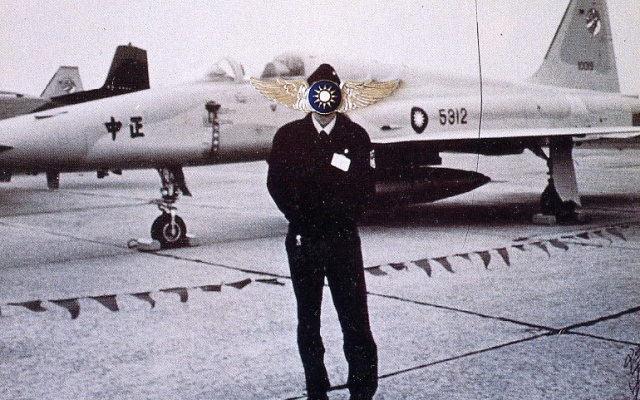“The long poem of walking manipulates spatial organizations no matter how pan-optic they may be…”
Michel de Certau
The above title and quote are taken from the influential book The Practice of Everyday Life by French thinker Michel de Certau, and in particular, its elucidating chapter “Walking in the City.” The book, which constructs a kind of spatial politics, came to mind recently when thinking about Taipei artist Yao Jui-chung and the ambiguous state of Taiwan where we both reside. Yao, despite the mischievous and undercutting nature of much of his work has become a representative artist. His work is ubiquitous in Taiwan, aided in part by his prolific publishing activities, and he has represented the island state, that receives little diplomatic recognition, at prestigious international events such as the Venice Biennale. Government publication Panorama, which is available in more than 100 countries, named Yao the most representative figure in Taiwanese art.
But while Yao seems comfortable operating amongst the upper echelons and receiving as much national symbolic validation as a rabble rouser can hope to achieve, my image of Yao also includes the memory of him chewing betel nuts, the gritty street stimulant popular among workers here, at the gallery VT Artsalon, which he established together with a collective of artist friends. In meeting Yao, I was immediately struck by the fluidity in which he moves through Taiwanese space and artistic mediums, but also with his relentless singularity of purpose in building a Taiwanese identity in his reworking of the fabric of culture and politics in the mythic and technocratic spheres.
In The Practice of Everyday Life De Certau distinguishes between strategies and tactics in the production and negotiation of space. Strategies are used by established institutions and centers of power to overcode reality and create the superstructure within which we have no choice but to operate. Tactics, in contrast, are used by the weak (us) as a defensive and opportunistic means to create our own lines of flight and make inhabitable the system into which we are cast. De Certau’s work attempted to move our thought away from the received products of our culture and language towards the act of interpreting and reworking the material by the active user or consumer. He begins the book by describing a sight from the then-standing World Trade Center. From this position one can see the expanse in contrast to those moving about on the ground below who can never have the total perspective or sublimate what De Certau describes as the desire to become a viewpoint - those who are writing a story that they cannot read. And yet the panoptic view can never quite lay hold of its object. The superstructure we inhabit, De Certau tells us, is a “sieve order,” filled with the potential for ellipsis and rupture. The walker of the city “condemns certain places to inertia or disappearance and composes with other spatial ‘turns of phrase’ that are ‘rare,’ ‘accidental,’ or illegitimate.”
The explicit reworking and interrogation of space is a primary concern of Yao Jui-chung’s photographic series the Mosquito Project in which he has directed as many as 220 of his students at two of Taiwan’s universities – National Taiwan Normal University and Taipei National University of the Arts – to return to their home towns and communities to research and document Taiwan’s many disused or idle constructions and facilities that are scattered across the island. The constructions, built on election promises with little foresight, planning or understanding of the actual needs of local citizens, number in their hundreds to the cost of millions of dollars. They’re called “mosquito halls” as the insects are their only active residents. These facilities include culture centers, sports venues, parking lots, and airports. So far the constructions have been numerous enough to fill five heavy volumes of the publication Mirage: Disused Public Property in Taiwan, produced by Yao and his students under the name LSD (Lost Society Document). An English language compendium of previous volumes was recently launched at Taipei Contemporary Art Center.
While exposing the crude mechanisms of the political economy the photographs open up a hallucinatory space, a museum of the present and ghostly relics of an imagined society that never became. The photographs catapult the viewer into a maze of possibilities and challenge us to rework these empty spaces that are nonetheless pregnant with potential meaning. The challenge to the community is to make use of the defunct spaces and turn them to its own ends.
As a piece of art activism the Mosquito Project was uniquely effective. After sparking a dialogue in the media the government was embarrassed to the extent that a meeting with Yao and his students was requested by the Taiwanese Premier Wu Den-yih, who issued an order for all of the spaces to be activated within a year. But the phenomenon persists – though with more discussion taking place about how to use the existing constructions – and the Mosquito Project continues.
In discussing the active role of the walker through space – which he describes as being analogous to the speech act itself – De Certau offers the example of Charlie Chaplin who moves through urban and cinematic space while multiplying the possibilities of his cane. In a sense Chaplin is hapless, blown around by the breeze, bouncing around on the stage of life like a ball inside an old-fashioned pinball machine. And yet he tactically negotiates the space, slipping through its knots, and activating an ecstatic subversive energy.
In some of his most well-known works, Yao casts himself into the maelstrom of history - “shitory” as he acerbically calls it – diving headfirst into the official narratives of the Republic of China. Yao is from the last generation of Taiwansese to be taught at school that the ROC would eventually retake mainland China from where it had fled to the island of Taiwan when it was vanquished by Mao in the Civil War in 1949. By the time Yao was attending school the narrative had been stretched to the absolute limits of absurdity. The “international community” has recognized the PRC (People’s Republic of China) as the one official China since 1971 when the PRC supplanted the ROC at the United Nations and took its seat as one of the five members of the Security Council. The ROC, or Taiwan, headed off into the political and diplomatic wilderness. But after enduring what was the longest period in world history of martial law (since surpassed by Syria), Taiwan morphed from a one-party military state into a pluralistic democracy after lifting out of martial law in 1987. The subsequent decade has been described as a period of “Taiwanization” when artists and thinkers utilized their newly-won freedoms to explore previously suppressed histories and art forms and develop notions of Taiwanese identity.
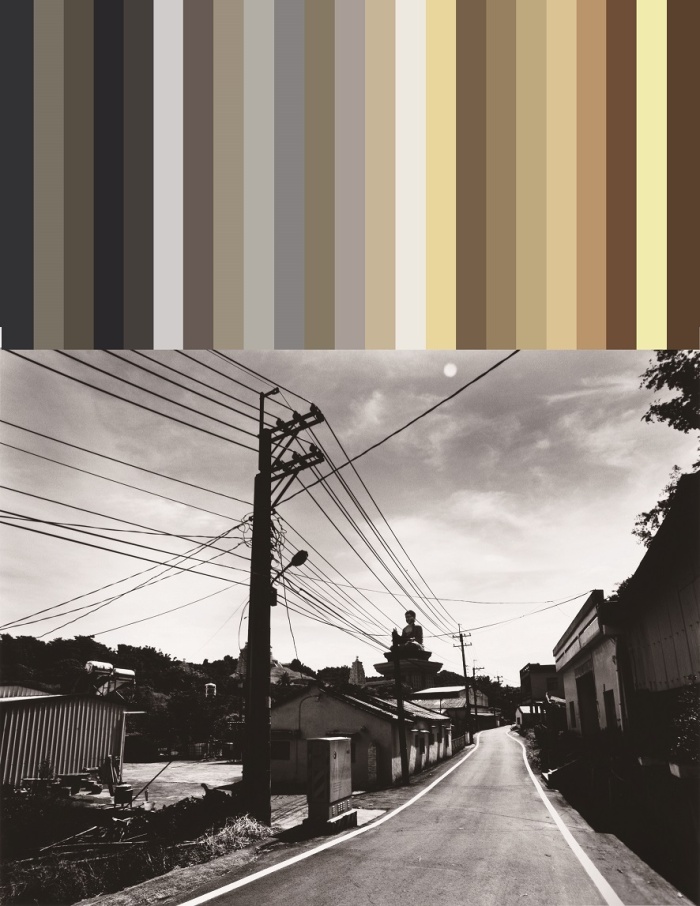
Yao Jui-chung, Kaohsiung City, Buddha Mountain (Sakyamuni Buddha)
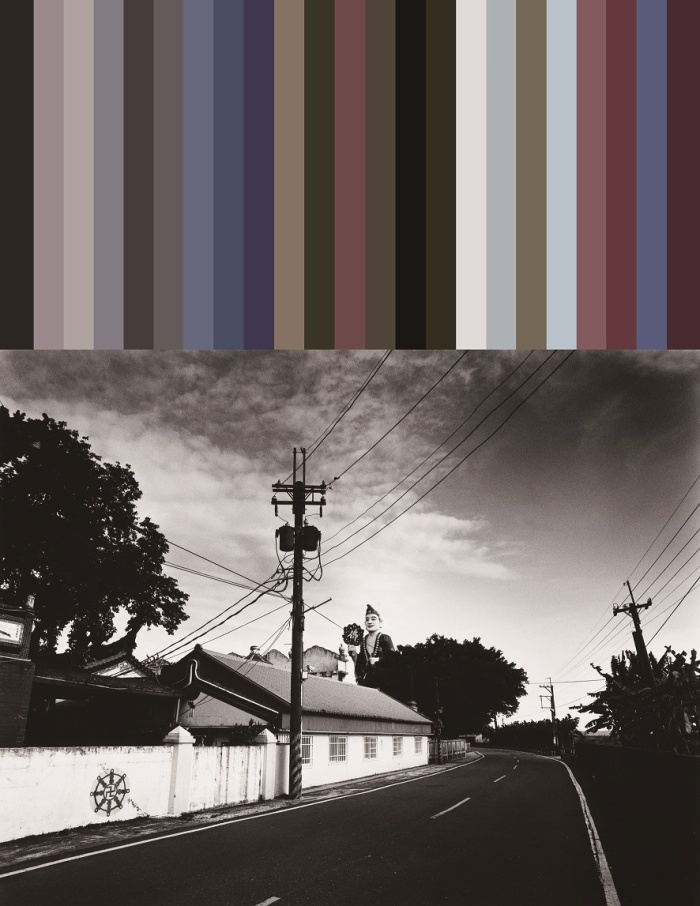
Yao Jui-chung, Kaohsiung City, Fongshan Temple (Ji Gong)
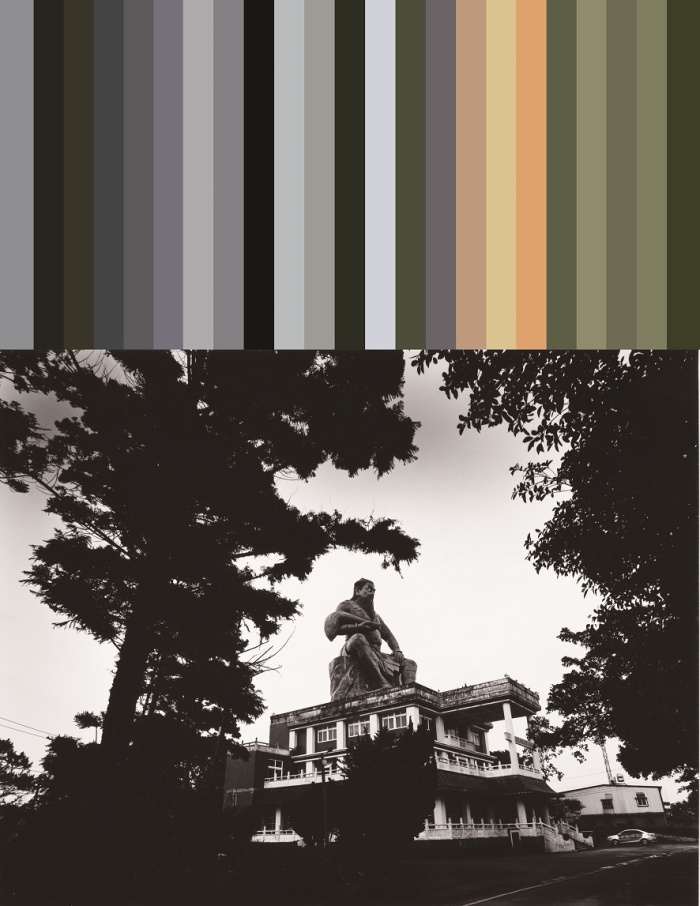
Yao Jui-chung, Taoyuan City (Taiwan), Xinxiang, Changxiang Palace (Shennong)

Yao Jui-chung, Recover Mainland China, Action at the National Museum of History, 1996
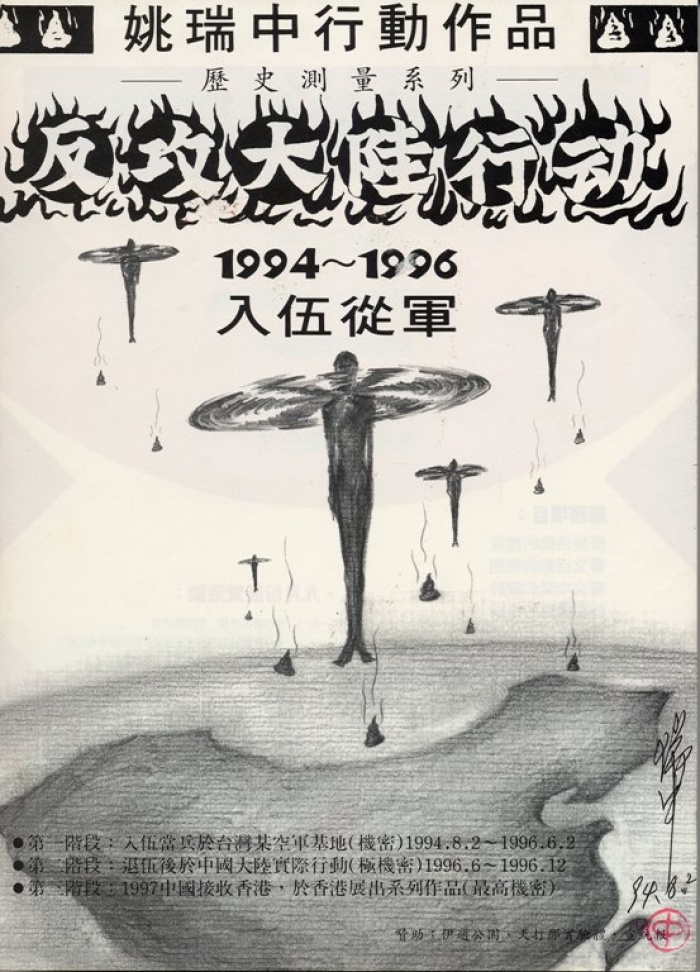
Yao Jui-chung, Recover Mainland China, Action for the National Museum of History, 1996
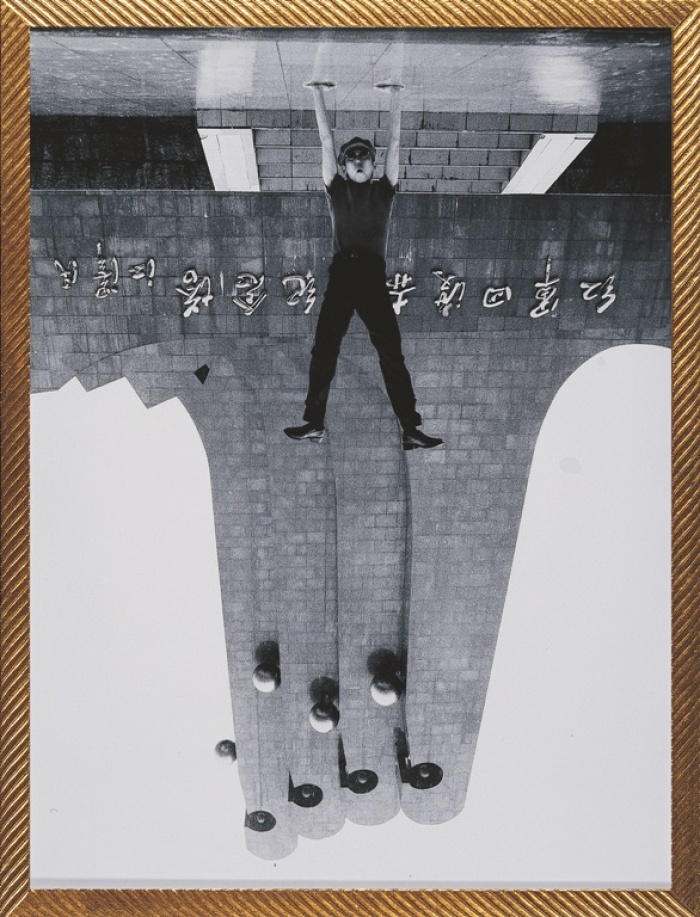
Yao Jui-chung, Long March-Shifted the Universe, Monument for the Red Army’s Four Crossings of the Chishui River, 2002
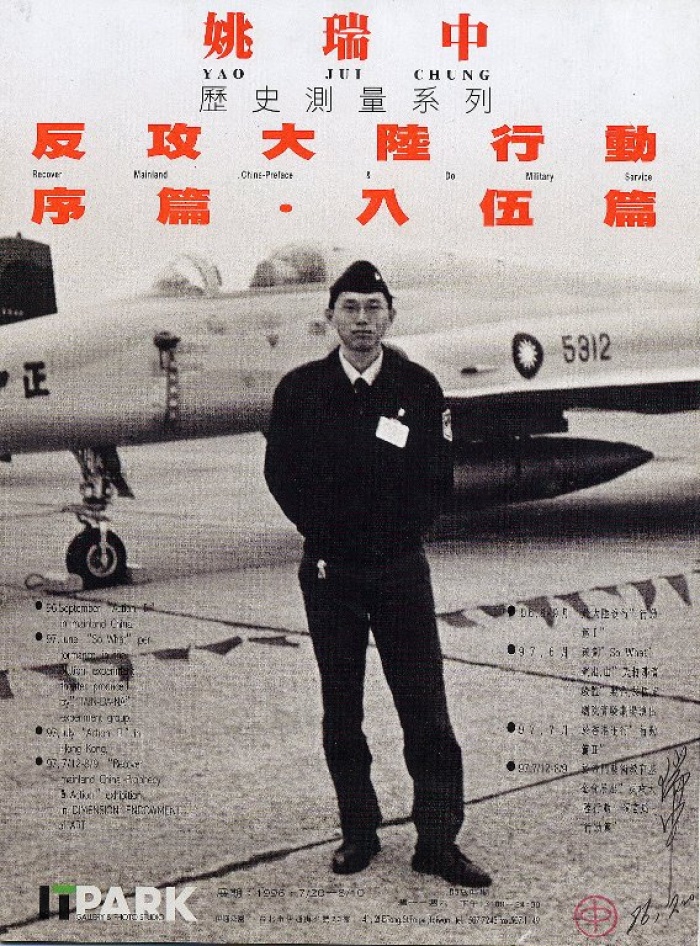
It was into this turbulent but fertile period of political and cultural transformation that Yao emerged as a Taiwanese artist. Yao didn’t dip his toes into the thick current but rather dove in head first. After graduating from the National Taipei Institute of Art in 1994, Yao placed a satirical but deadpan advertisement in the periodical Hsiung Shih Art Monthly announcing his intention to retake the mainland. The parodic but unnerving gesture was followed up on with his photographic series Recover Mainland China in which Yao photographed himself in front of historic Chinese sites in his military garb as a one-man army ready to carry out the official policy he was taught at school. Taiwan art critic JJ Shih describes him as appearing “phantomlike or rigid… a fanatical follower of the slogan.” In the photographic action series Long March - Shifted the Universe Yao re-enacts Mao’s long march in reverse, doing handstands in images that are flipped upside down, presenting the appearance of him holding up the world. The work elucidates poetically the tension of the individual gaining self-determinacy in an obstinate world. His idle footsteps scuttlebutt the utilitarian demands placed on the individual by an extracting system and carve furniture out of grand narratives. To draw on De Certau one last time, he escapes the system without leaving it, albeit moment by moment.
Ron Hanson / White Fungus
BIO
White Fungus is an art magazine based in Taichung City, Taiwan. Founded by brothers Ron and Mark Hanson in Wellington, in 2004, as a quasi-political manifesto, copies of the first issue were produced on a photocopier, wrapped in Christmas paper and hurled anonymously through the entrances of businesses throughout the city. Now a magazine featuring interviews, writing on art, new music, history and politics, White Fungus takes a dialogical approach to the work it covers. The name of the publication comes from a can of “white fungus” the Hansons found in their local supermarket in the industrial zone of Taichung City. Each cover of White Fungus is derived from a scan of the can.



